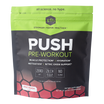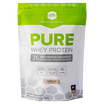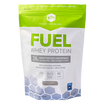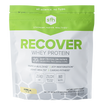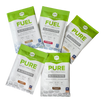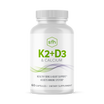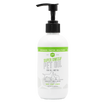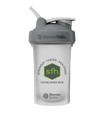Designing a Fitness Program Based on Your Goals
So, you have decided that you want to get “fit!” First off, AMAZING!!! Building a strong base level of fitness will serve us well by making normal daily tasks easier, improving our mood (thank you serotonin and dopamine), help us live longer, and give us more self-confidence! What’s not to love?
Setting the broad goal is a huge first step but remember, we won’t make it very far if it’s not a SMART goal. SMART = Specific, Measurable, Attainable, Relevant, and Time-Oriented.
Decide what your goal is for your fitness program and then use the SMART Method to build your personal fitness program!
Specific
“Fit” is a very broad term, so we need to define what type of fitness. If we get too broad we tend to lose focus, try to do too much, or get discouraged because we are not seeing the type of results we wanted. So, let’s hone in and figure out what we want!
For instance, if you want bigger biceps, cycling is not going to accomplish that goal. You need to be strength training aka “Pump some iron” (in my best Arnold Schwarzenegger voice). Let’s say you want to run a marathon… a bunch of biceps curls is not going to get you across the finish line. I hate to break it to you but you’re going to have to run… A LOT!
For almost any fitness-related goal, we will need some facet of cardio and strength training but based on your goal you will need to bias one of the other. If building muscle mass is your goal put more focus on resistance training. If your goal is sport specific such as running a marathon or doing a triathlon you will focus on training for the sport + 2 days of strength training per week to supplement your goal.
Measurable
Don’t just say you want to run… how far or how fast? Doing a 5k, half marathon, or marathon is a great goal because there is a measurable distance and time, so you can easily track progress. If your goal is putting on muscle mass, how much? If you want bigger biceps, how many inches are you trying to add?
Set goals that you can set as a baseline on day 1 and then track progress as you go. Small incremental improvements that you can see on paper can be the wind in your sails that keeps you going! Write down your goals and log/ journal your workouts!
The Gym is amazing because it is easy to set measurable goals. I like “non-scale” goals initially such as trying to increase the weight you can lift on certain exercises because this is easy to track and is super encouraging to see improvements!
Attainable
Okay… this is where our feelings might get hurt and we need to get honest with ourselves. How much time do we have to commit to our goals? If we can only make it to the gym 3 days per week, setting a goal to look like Arnold Schwarzenegger is probably not going to happen and we set ourselves up for a disappointment.
However, if we can workout 3 days per week and set a goal to increase our bench press one rep max and add 5 lbs of muscle mass… now we are cooking! This is an attainable goal and will give us the momentum we need to keep improving.
Relevant
Does your goal fit into your lifestyle? And again, does your training align with your goal?
- Lifestyle: to train for a marathon, you will likely need 2 hours each Saturday for you long runs. If you know that is not going to work for you schedule, you will need to adjust the running schedule or choose a goal that better suits your time constraints.
- Training: this goes back to specificity, does your training, diets, lifestyle align with your goal? For example, if you’re wanting to increase your strength, jogging isn’t going to cut it… you’re going to need bench press, squats, and deadlifts!
Time-Oriented
This one is HUGE! Set dates to hit your goals by. If you don’t give yourself a date to accomplish your goal, there will be no sense of urgency. If the goal of your exercise program is to build stronger legs. Test all of your main lifts on week 1. Then follow your 8-week lifting program and then retest your lifts after the 8 weeks. This hits the nail on the head by creating a plan that adheres to the SMART principles!
Cheat Sheet of Goals
Strength Building
Aim for 6-12 reps with moderate weight.
Lifting 3-5 days per week with 48-72 hours in between muscle groups
Eat a caloric surplus to gain weight
Gain Muscle Mass
Aim for 6-12 reps with moderate weight
Lifting 3-5 days per week with 48-72 hours in between muscle groups
Eat a caloric surplus to gain weight
Weightloss
Use a mixture of strength training and cardio 3-5 days per week
15 reps on resistance exercises
Eating in a caloric deficit
Marathon or Cardio-Based Event
Train sport specific 4-5 days per week + 2-3 resistance training sessions
Aim for 15 reps on resistance exercises
Ultimately, choose something you enjoy because you are more likely to adhere to it, have fun, give yourself grace when you mess up, and enjoy the process!
Getting stronger in the gym will benefit almost any pursuit in life. Start with the basics and make sure you are training every muscle group!
Two basic ways to get started are:
- Full body workouts on Monday, Wednesday, and Friday
- Monday = Lower Body, Tuesday = Upper Body, Thursday = Lower Body, Friday = Upper Body
Most importantly, just start!
-Ben
Meet the Author

Ben Barker is a fitness coach from Little Rock where he lives with his wife, 3 kids, and their dog, Wrigley. He graduated with a Bachelor of Science in Kinesiology from the University of Central Arkansas and is passionate about helping people push their boundaries of fitness and performance.


